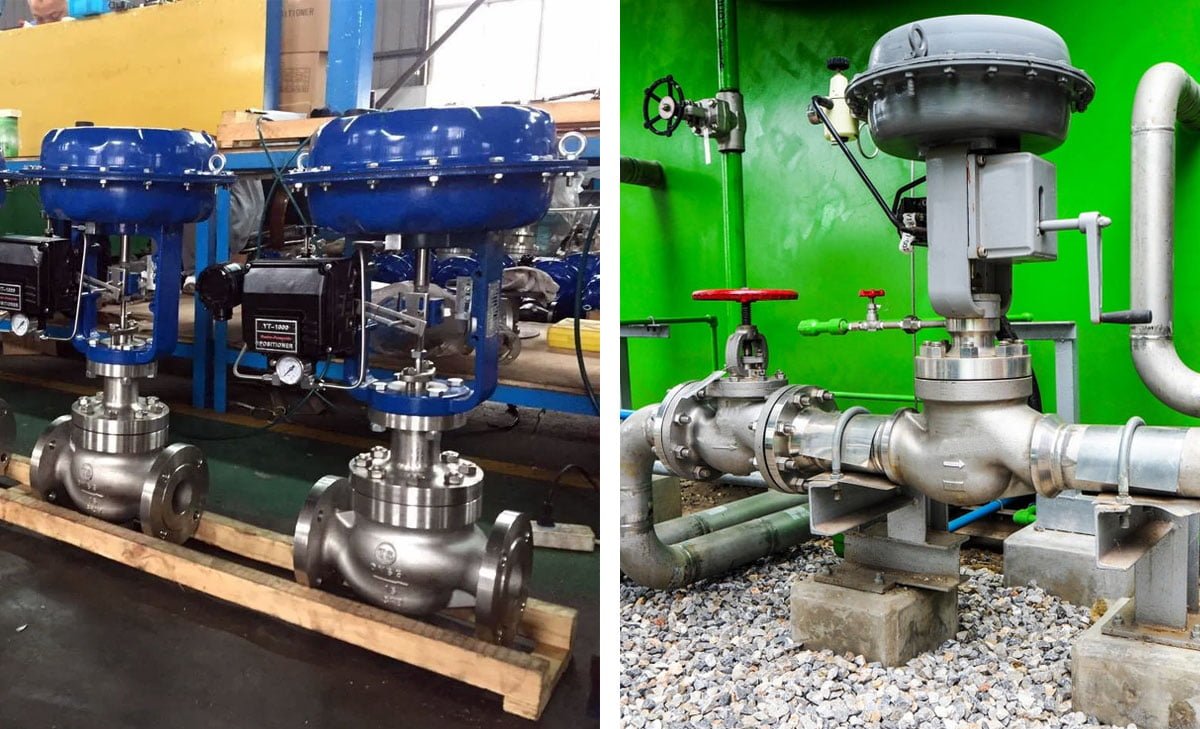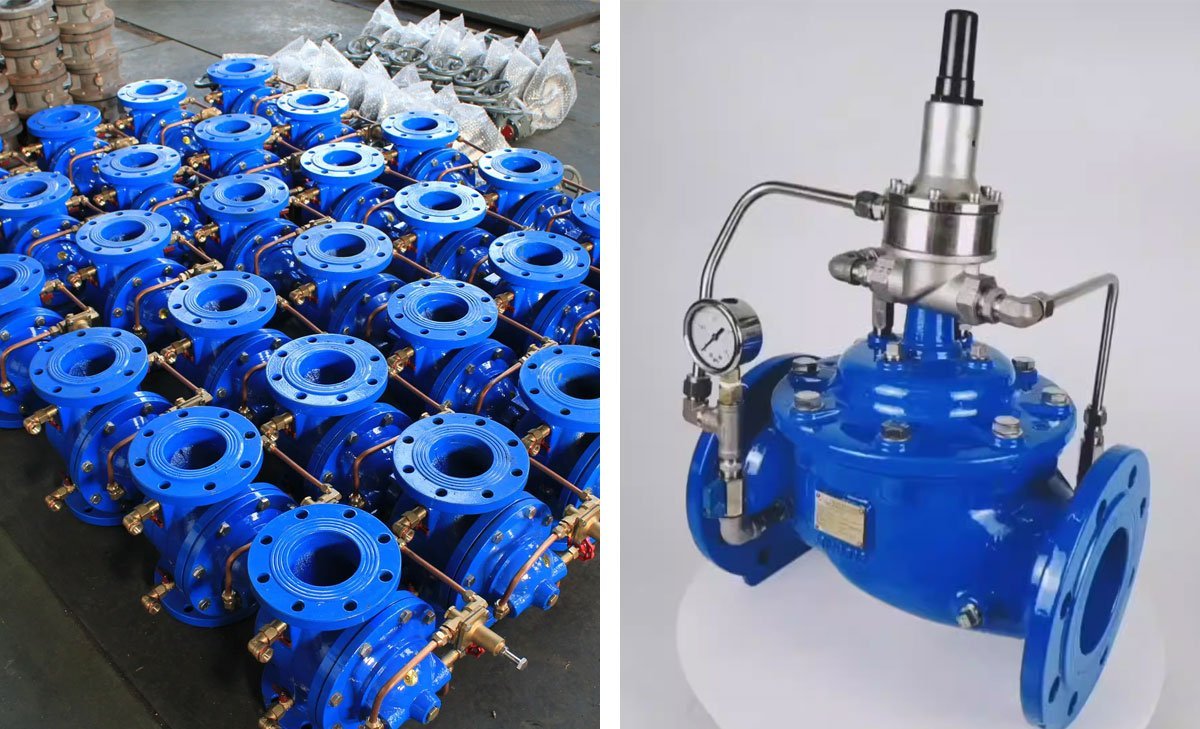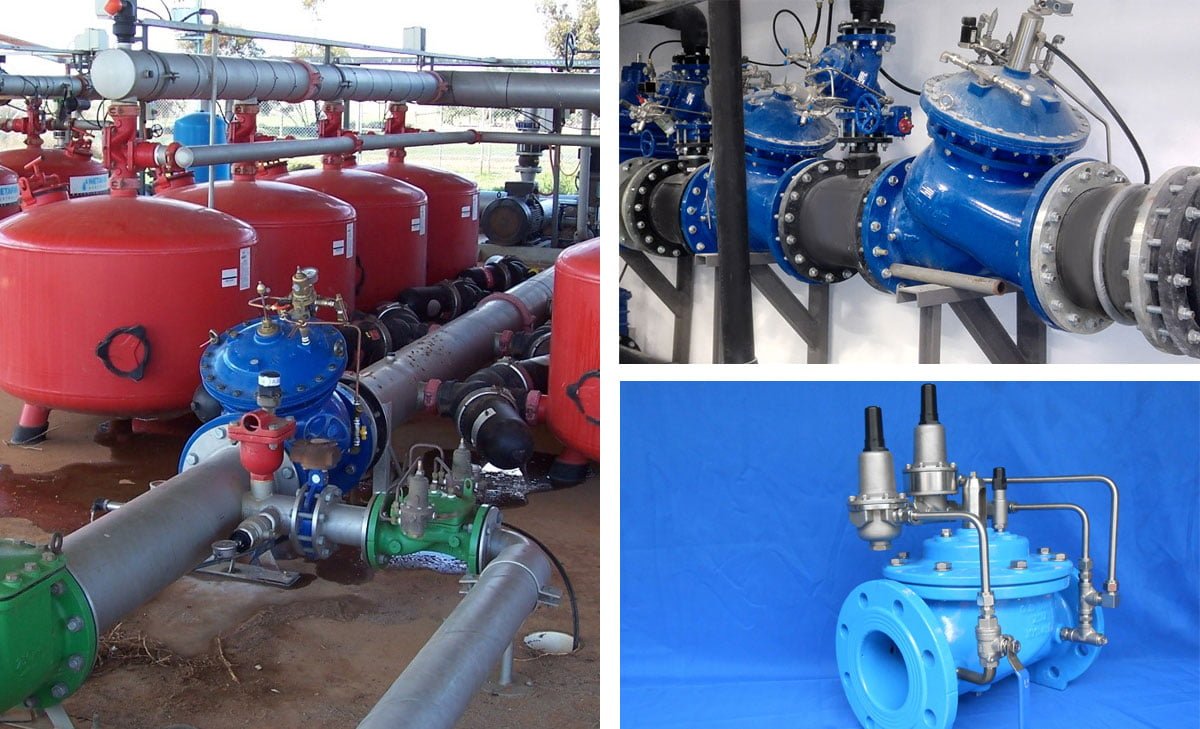Pneumatic Control Valves: Mastering the Key Features

Table of Contents
ToggleUnderstanding the Key Features of Pneumatic Control Valves
Pneumatic control valves play a crucial role in directing airflow to control the speed and sequence of operations in a pneumatic circuit. These valves are classified based on flow paths under various operating conditions, considering factors such as the number of valve positions and ports. Common configurations include two-way, two-position valves, three-way, two-position valves, and four-way valves with two or three positions. Understanding these key features is essential for constructing effective pneumatic systems.
What Are Pneumatic Control Valves?
Pneumatic control valves play a critical role in regulating the flow of fluids and gases in a wide range of industrial applications. Understanding the key features of these valves is essential for engineers, technicians, and anyone involved in the design, operation, or maintenance of pneumatic systems. In this listicle, we will explore the essential features of pneumatic control valves and how mastering them can optimize the performance and efficiency of pneumatic systems.
Actuation Methods Pneumatic control valves can be actuated using various methods, including diaphragm, piston, and rotary actuators. Understanding the differences between these actuation methods is crucial for selecting the right valve for a specific application. Diaphragm actuators, for example, are commonly used for low-pressure applications, while piston actuators are suitable for high-pressure environments.
Valve Body Construction The construction of the valve body plays a significant role in determining its performance and durability. Different materials such as stainless steel, carbon steel, and brass are used for constructing valve bodies, each with its own advantages and limitations. It is important to consider factors such as corrosion resistance, temperature tolerance, and pressure ratings when selecting the appropriate valve body construction for a given application.
Flow Characteristics Understanding the flow characteristics of pneumatic control valves is essential for ensuring precise control of fluid or gas flow. Valves may exhibit linear, equal percentage, or quick opening flow characteristics, each suited for specific control applications. Engineers and technicians must consider the inherent flow characteristics of the valve when designing control systems to achieve the desired level of flow control.
Valve Trim The design and configuration of the valve trim, including the plug, seat, and other internal components, significantly impact the flow control performance of pneumatic control valves. Factors such as flow capacity, pressure drop, and inherent flow characteristics are influenced by the type of valve trim used. Mastering the selection and configuration of valve trim is crucial for achieving precise and efficient flow control in pneumatic systems.
Fail-Safe Features Many pneumatic control valves are equipped with fail-safe features to ensure the safety and reliability of the overall system. Understanding the fail-safe mechanisms, such as spring-return or double-acting actuators, is essential for designing systems that can respond to unexpected events or power failures. Engineers and operators must master the fail-safe features of pneumatic control valves to mitigate potential risks and ensure system integrity.
Positioner and Accessories Pneumatic control valves often require positioners and accessories to achieve precise control and modulation of flow. Mastering the selection and integration of positioners, air sets, and other accessories is crucial for optimizing the performance and responsiveness of pneumatic control valves. Engineers and technicians must have a deep understanding of how these components interact with the valves to achieve the desired control objectives.
Maintenance and Troubleshooting Effective maintenance and troubleshooting procedures are essential for ensuring the long-term performance and reliability of pneumatic control valves. Mastering the inspection, cleaning, and calibration of valves, as well as troubleshooting common issues such as air leaks and valve stiction, is critical for minimizing downtime and optimizing the efficiency of pneumatic systems. Engineers and maintenance personnel must be proficient in these tasks to maximize the lifecycle of pneumatic control valves.
Mastering the key features of pneumatic control valves is indispensable for achieving optimal performance, reliability, and safety in pneumatic systems. By understanding and confidently applying the principles of actuation methods, valve body construction, flow characteristics, valve trim, fail-safe features, positioners and accessories, as well as maintenance and troubleshooting, engineers and technicians can elevate the effectiveness of pneumatic control valves in diverse industrial environments.
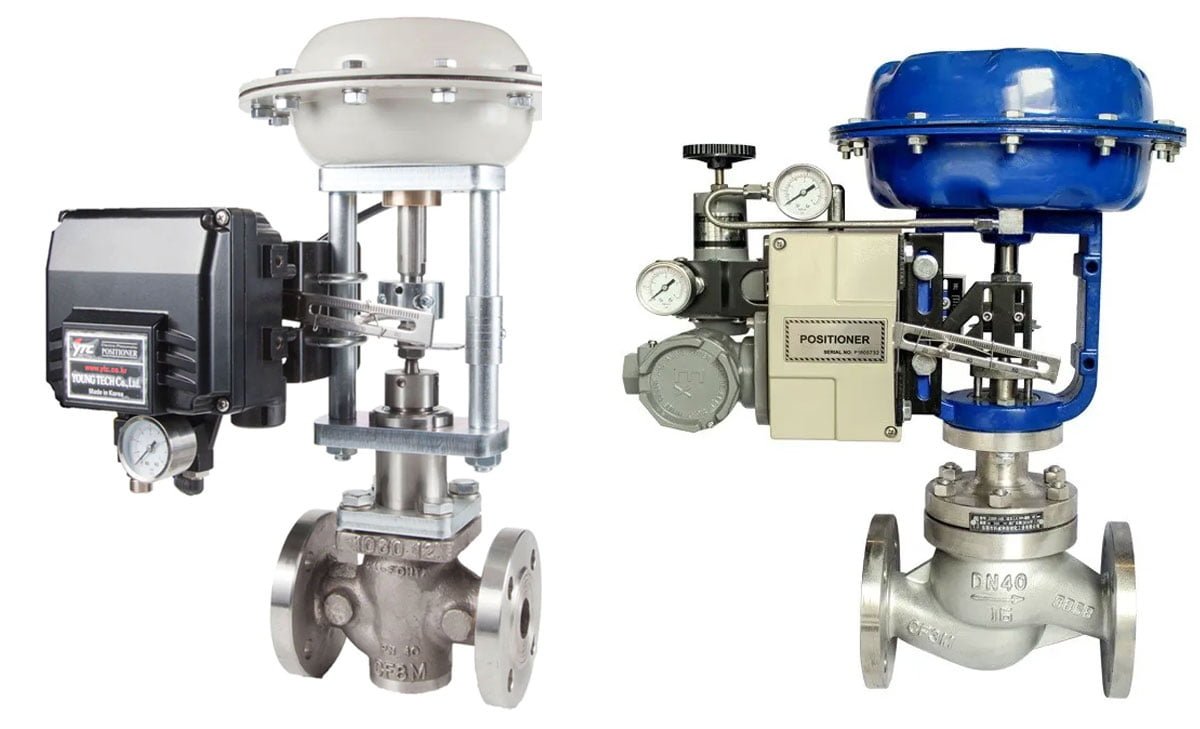
The Role of Pneumatic Control Valves in Systems
Pneumatic control valves are responsible for precisely controlling the flow, pressure, and direction of the pressurized air or gas within pneumatic systems. This regulation facilitates the smooth operation of various pneumatic components, ensuring the efficient performance of automated processes.
Types of Pneumatic Valves and Their Applications
Pneumatic valves come in various types, including directional control valves, pressure control valves, flow control valves, and proportional control valves. Each type serves specific functions in regulating the pneumatic system. Directional control valves determine the direction of airflow, pressure control valves manage the pressure levels, flow control valves regulate the rate of airflow, and proportional control valves enable precise control over the flow and pressure.
These valves find applications in a wide range of pneumatic systems, such as industrial automation, manufacturing equipment, assembly lines, and machinery in various industries. Their versatility and efficiency make them indispensable for achieving accurate control and automation in pneumatic setups.
For further understanding of pneumatic control valves, refer to resources such as Pneumatic Tips and Machine Design.
Understanding Valve Configurations
Hydraulic systems rely on directional control valves to manage fluid flow and ensure precise operation. Understanding the various valve configurations is crucial for optimizing system performance and functionality.
Two-Way, Two-Position Valves
Two-way, two-position valves control fluid flow by either opening or closing a single passage. These valves are commonly used in on/off applications, where the movement of actuators or cylinders is required in one direction with a simple start/stop function.
Three-Way, Two-Position Valves
Three-way, two-position valves divert fluid flow between two separate paths. This configuration allows for the activation or deactivation of a single-acting cylinder or actuator by directing fluid to and from the cylinder as needed.
Four-Way, Two-Position Valves
Four-way, two-position valves are essential for directing fluid flow between two actuators or cylinders. By controlling the flow direction, these valves enable precise movement and synchronization of multiple components within a hydraulic system.
Four-Way, Three-Position Valves
Four-way, three-position valves offer greater flexibility in directing fluid flow, allowing for the control of double-acting cylinders and other multi-functional actuators. This configuration provides the capability to stop and hold loads at various points within a system, enhancing operational control.
Understanding the distinct functions of these valve configurations is integral to designing and implementing efficient hydraulic systems across a wide range of industries. For more in-depth information on hydraulic valve technology and applications, refer to reputable sources such as Fluid Power Journal.
Key Features of Pneumatic Control Valves
Number of Ports and Their Importance
Pneumatic control valves come in 2-way, 3-way, and 4-way configurations. Understanding the number of ports is crucial in determining the valve’s functionality. In a 2-way valve, media flows through an inlet and outlet port, while in a 3-way valve, an additional port allows for pressure venting. 4-way valves have two outlet ports and are commonly used for controlling double-acting pneumatic cylinders and actuators.
Valve Positions and Flow Paths
The valve position and flow paths are vital aspects to consider in pneumatic control valves. Depending on the application, the valve can be normally closed or normally open. Understanding the flow paths ensures the proper functioning of the control valve for specific operational requirements.
Actuation Methods
Pneumatic control valves can be actuated through various methods, including solenoid-operated, manual, mechanical, and remote air-operated. Each method suits different applications and operational needs. The actuation method directly influences the responsiveness and control of the valve.
Center Conditions
The center conditions of a pneumatic control valve determine how it returns to its original state after actuation. Spring-return valves use a mechanical spring, while detented actuation valves employ a different form of actuation method. Understanding center conditions is essential in deciding whether the valve should return to its initial position or stay in its last position after actuation.
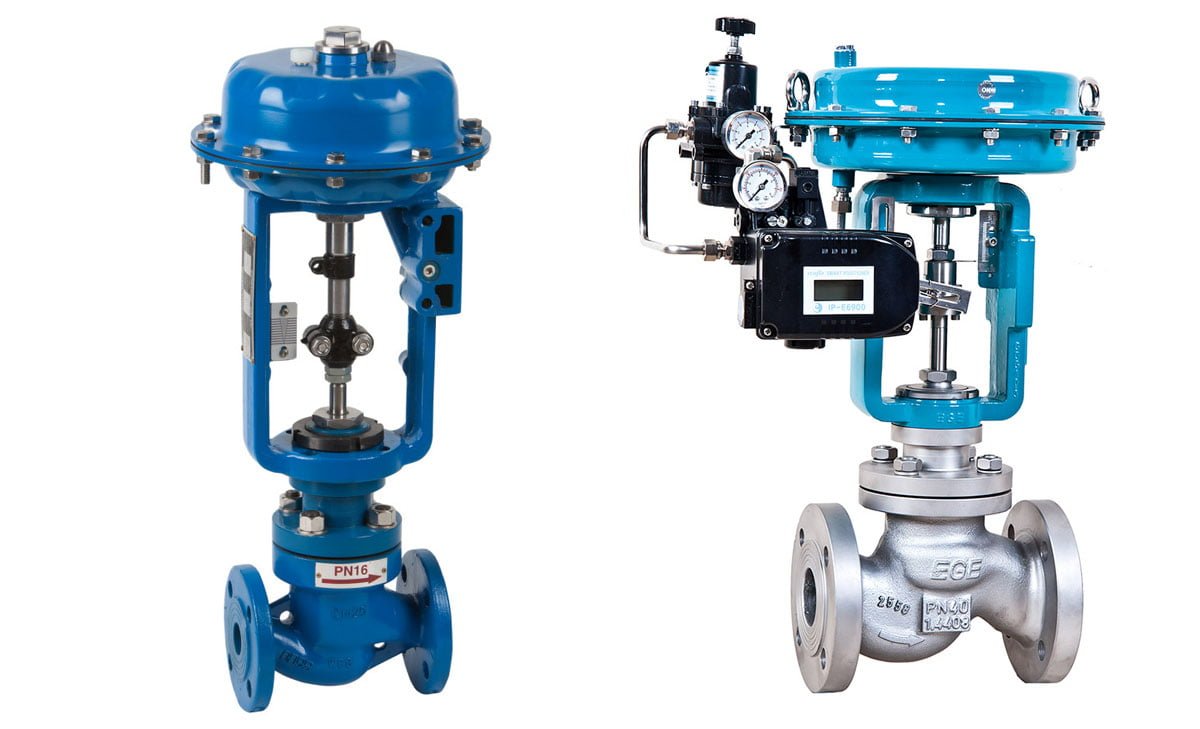
Selecting the Right Pneumatic Control Valve
Factors Influencing Valve Selection
When choosing a pneumatic control valve, it is essential to consider several factors. The type of media (gas or liquid) to be controlled and the input pressure are primary considerations. Additionally, the method of valve actuation, such as solenoid-operated, manual, mechanical, or remote air-operated, must be evaluated. The type of valve return method, whether spring-return or detented actuation, also impacts the selection. Furthermore, valve configuration, including 2-way, 3-way, or 4-way options, based on the number of active media ports, should be taken into account. These factors collectively influence the selection of the right pneumatic control valve for a specific application.
The Impact of Valve Speed on System Performance
Valve speed plays a crucial role in system performance. The speed at which a pneumatic control valve opens and closes affects the overall efficiency and responsiveness of the system. It is important to match the valve speed with the requirements of the application to optimize performance. A valve operating too slowly may lead to sluggish system response, while a valve operating too quickly may result in instability or excessive wear and tear. Therefore, understanding the impact of valve speed on system performance is critical in selecting the appropriate pneumatic control valve.
Energy Conservation and Valve Configuration
Energy conservation is a key consideration in pneumatic control valve selection. The configuration of the valve directly impacts energy efficiency, as it determines the flow path and control of media within the system. Proper valve configuration can minimize energy consumption by optimizing the flow of compressed air or other gases. Moreover, selecting the right valve configuration can contribute to the overall sustainability of pneumatic systems, reducing energy costs and environmental impact. By prioritizing energy conservation in valve configuration, businesses can achieve operational cost savings and environmental stewardship.
For more information on pneumatic control valve selection, visit Humphrey Products.
Maintenance and Troubleshooting
Common Maintenance Practices for Pneumatic Valves
Regular maintenance of pneumatic control valves is essential to ensure their proper functioning and longevity. Some common maintenance practices include inspecting for air leaks, lubricating moving parts, replacing worn out seals or O-rings, and cleaning the valve components. Inspecting the air supply system and ensuring proper filtration can also help prevent issues with pneumatic valves. Implementing a preventive maintenance schedule can aid in identifying potential problems before they escalate, thus reducing downtime and costly repairs.
Troubleshooting Valve Performance Issues
When troubleshooting pneumatic valve performance issues, it’s important to approach the problem systematically. Start by checking for air leaks, as leaks can disrupt the valve’s operation. Inspect the valve for any physical damage or signs of wear and tear. Verify that the air supply pressure is within the recommended range and that the air filtration system is functioning effectively. Additionally, examining the control signal and actuator response can help pinpoint the source of performance issues. Refer to reputable sources such as Valve Magazine or Plant Engineering for comprehensive information on troubleshooting pneumatic valve problems.
Conclusion
Understanding the key features of pneumatic control valves is crucial for designing effective pneumatic systems. The classification of directional-control valves based on flow paths and operating conditions allows for precise control of airflow to regulate the speed and sequence of operations. From two-way, two-position valves to four-way, three-position valves, each configuration serves specific functions and offers advantages in different applications. By considering factors such as basic valve design, pneumatic system constructors can optimize performance and efficiency.











